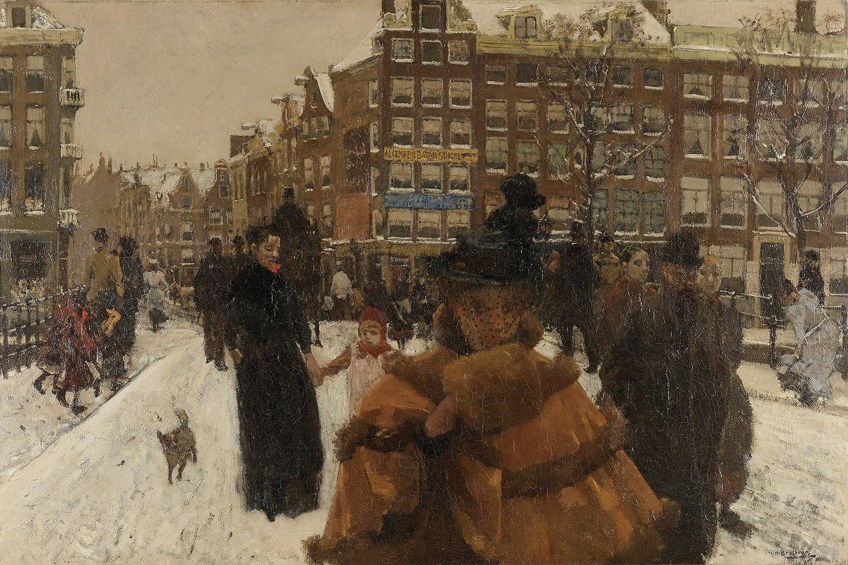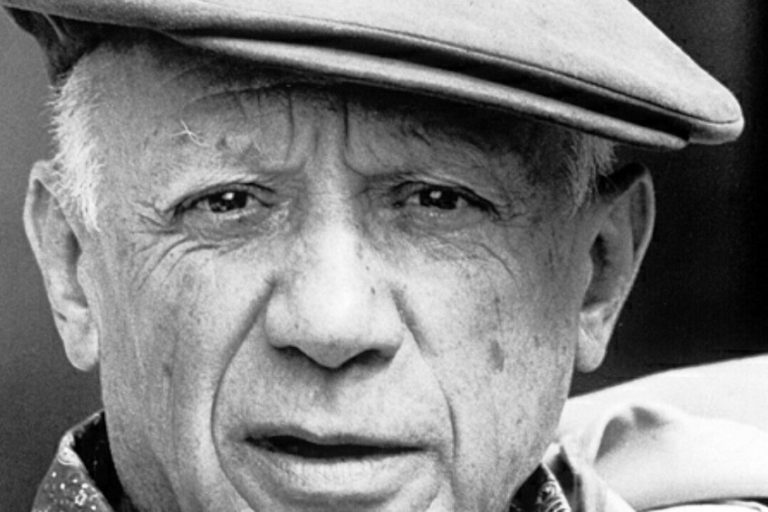Famous Dutch Painters and Paintings – Art of the Dutch Golden Age
The Netherlands has produced some of the most influential painters in all of art history. Beginning in the 1400s, Dutch art would spiral in various directions, providing countless masterpieces along the way. While a discussion about the most famous Dutch painters could extend into days, these are ten artists who had a pivotal impact on not only Dutch art, but art as a whole.
Famous Dutch Painters and Paintings
This list takes a wide historical perspective so that painters from all eras of Dutch art can be recognized. Some painters you may know, others you may not, but by the end of this article, you will have a firm grasp on famous Dutch painters, their movements, their paintings, and the styles they perfected. All of the artists in this list are of Dutch descent, and all have left their unique imprint upon the discipline of painting. Many of the artists are also known for their works beyond paint, often engaging other mediums as well.
Jan van Eyck (c. 1390 – 1441)
| Nationality | Dutch |
| Residences | Netherlands Belgium France |
| Associated Art Movements | Early Netherlandish Flemish Primitives |
| Most Famous Artworks | Ghent Altarpiece (1432) The Arnolfini Portrait (1434) Madonna in the Church (1438) |
Many consider Jan van Eyck to be amongst the first famous Dutch painters, if not the first altogether. He was a master of the Early Netherlandish period and played a foundational role in the popularization of Dutch art, in both his era and in the centuries that followed.
Historians estimate van Eyck’s birthdate as either before 1390 or 1395 because of the scarcity of information on his early life.

His paintings indicate that he must have received a formidable education in natural and biblical themes. Van Eyck enjoyed great success during his career, settling comfortably as a royal court painter. The pay was good, and the fame was even better, interacting daily with the elites of his time. He and other Netherlands artists such as Robert Campin would eventually crystallize as the Flemish Primitives.
This movement was unique to the Netherlands and was the first to put the country on the mainstream artistic map.
Van Eyck is sometimes confused as the sole inventor of oil painting. While he did not create the medium, he is understood to be its greatest innovator. He perfected the use of oil, unlike any artist before him. He sparked a revolution that spread across Europe rapidly and would endure long after his death in 1441.
The Ghent Altarpiece (1432)
| Year | 1432 |
| Size | 5.2 x 3.75 meters |
| Techniques | Light manipulation Transparent glazing Religious painting |
| Materials | Polyptych, Oil on wood |
The Ghent Altarpiece is arguably van Eyck’s most famous work. It is a prime example of the artist’s transition from early Gothic styles into a now-familiar Dutch naturalism. It is a polyptych (multi-paneled) piece designed to rest behind an altar, a popular commission at the time. It offers both an open-panel and closed-panel view. The work is a strong example of van Eyck’s abilities with early oil paints, particularly in the way light is distributed from the heavens upon the field below.
It is also valuable due to its public nature; van Eyck mostly produced works for private patrons, and so this piece, destined for display, required a unique approach.

If you get a Renaissance feel from this piece, do not be alarmed. This work exemplifies the Northern Renaissance, which was inspired by the work of the classic Renaissance but also expressed important differences. The rigor and accuracy of Renaissance painting are visible in this work, but there are features that set it apart. What is in fact missing is the idealism common to Renaissance pieces. Van Eyck, in his infatuation with naturalism, wanted to place God and his earthly followers within the same frame. The Ghent Altarpiece is horizontally divided for this exact reason.
What is important here is not the Holy ideal but rather its relationship with the material world. To van Eyck, worldly themes could hold just as much beauty as religious themes.
Hieronymus Bosch (c. 1450 – 1516)
| Nationality | Dutch |
| Residences | Netherlands |
| Associated Art Movements | Early Netherlandish Northern Renaissance Flemish Primitives |
| Most Famous Artworks | The Crucifixion of Saint Julia (1497) The Temptation of Saint Anthony (1501) |
Hieronymus Bosch is an enigma in art history. Born in Hertogenbosch around 1450, Bosch became a master of religious and psychological imagery, often tapping into themes of human fear or decay. He is one of Europe’s most intricate painters, but also one of its darkest. Depicting demons and hellscapes was not a popular practice in the Netherlands before Bosch.
He is widely taken as one of the most original and unique painters in history – look closely at one of his paintings, and you will quickly understand why.

It is difficult to place Bosch in any of the main art movements of his time, as he often straddled between them. He has his roots in early Netherlandish art, particularly in the way he treated landscape and the Gothicism visible in his works.
He is considered a Flemish Primitive, but also often moves beyond this category.
For instance, his use of the impasto technique, which is a texturing of the painting by applying thick brushstrokes, was a major point of difference. Although, he cannot be categorized as classic Renaissance either, because of his fantasy themes.
The Garden of Earthly Delights (c. 1490-1510)
| Year | 1490-1510 |
| Size | 205.5 x 384.9 centimeters |
| Techniques & Styles | Impasto Religious narrative painting |
| Materials | Triptych, oil on oak |
Bosch is revered for his triptychs. These are artworks that consist of three sections or panels with a focus on the center. Bosch’s medium of choice was oil on wood, preferably oak. The Garden of Earthly Delights is meant to be read in sequence, with the left panel portraying Eden and the right panel portraying The Last Judgment. The middle section, containing an impossibly detailed collection of characters and objects, is an image of indulgent and excessive humanity on the verge of collapse.
The motivations and ideas behind Bosch’s works have always been a great mystery.

There is no reliable information as to why he painted the pieces he did. Art scholars have deduced over time that much of his work was ironic, which was achieved by balancing religious depth and humanism. In the sense that Bosch is always saying something with his paintings, we might consider him an early forerunner of critical art. Historians have traced that his upbringing in Hertogenbosch, which was a religiously progressive town, may have contributed to the depth of his religious works.
His focus is a fantastical treatment of humanity’s demise – the triptych is a warning against the social and spiritual enemies of the time. It is a pessimistic piece but delivered almost humorously.
Rembrandt van Rijn (1606 – 1669)
| Nationality | Dutch |
| Residences | Netherlands |
| Associated Art Movements | Dutch Golden Age |
| Most Famous Artworks | Anatomy Lesson of Dr. Nicolaes Tulp (1632) Storm on the Sea of the Galilee (1633) The Night Watch (1642) |
The most cherished artist of the Dutch Golden Age is the incomparable Rembrandt van Rijn. He was a 17th-century Dutch artist from Leiden who first found work at the Hague court. Rembrandt was soon in bustling Amsterdam, the cultural hub of the Netherlands at the time.
His skill was undeniable from the start, and he quickly became one of the most respected masters, not just in his home country, but all over Europe.
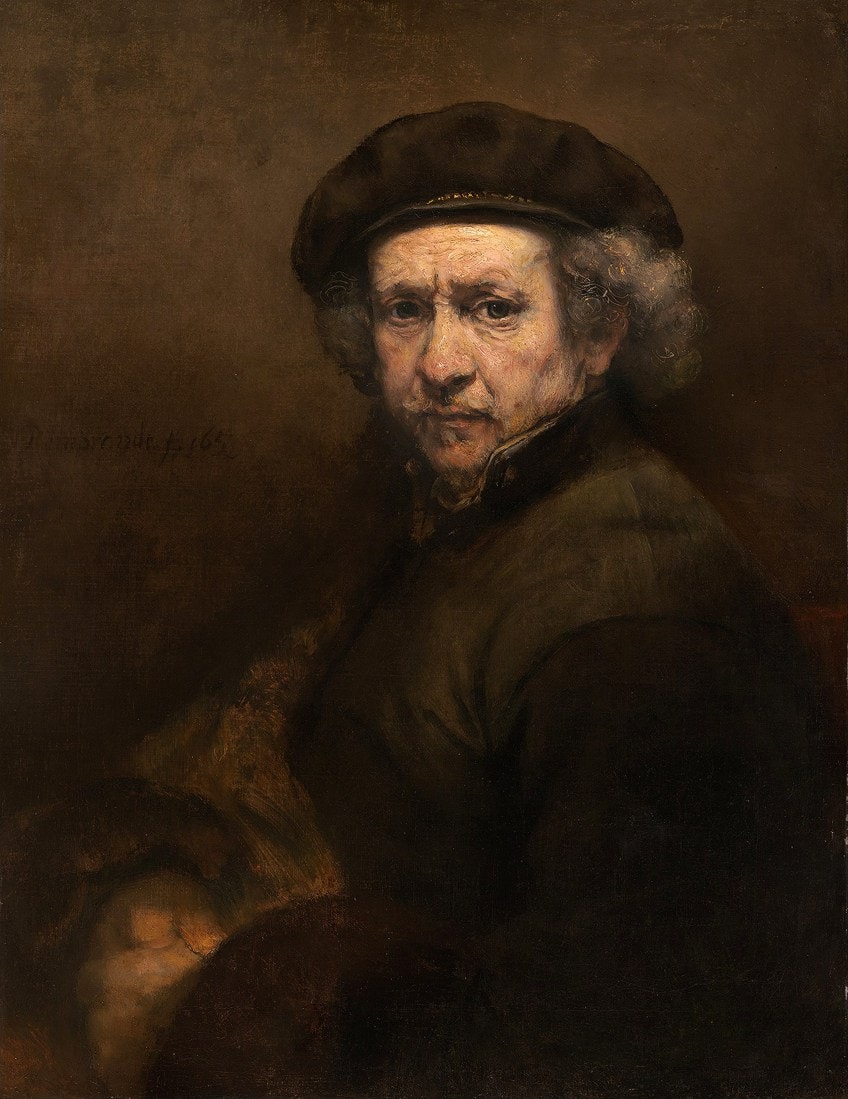
His personal life, on the other hand, was never as smooth as the strokes of his brush. Amidst all the success, he lost three young children between 1635 and 1640, and his wife passed away in 1642. By 1660, he had become poor and was supported gravely by his only son Titus, with Rembrandt passing away in 1669. Despite his struggles later in life, kings, dukes, and poets would always visit him when in Amsterdam.
The effect of his contribution (especially considering he never left the Netherlands), cannot be understated. Van Gogh once called him a magician.
Rembrandt can be considered one of the most versatile artists of all time. He was not only a painter but a teacher and art collector as well. He painted in various fields, working as a portrait, narrative, and Dutch landscape painter. History and religion were some of his favorite themes, but it was his ability to capture emotion through detail that allowed his visual retellings of biblical and historical stories to be so breath-taking.
The Night Watch (1642)
| Year | 1642 |
| Size | 3.63 x 4.37 meters |
| Techniques & Styles | Tenebrism (use of light and shade) Glazed impasto |
| Materials | Oil on canvas |
The Night Watch, a late-career work, is an expose in light mechanics and creative chiaroscuro. It is one of the most famous Dutch paintings. In this massive painting, Rembrandt captures motion in a richly descriptive yet controlled way. When combined with light and shadow work, it appears that the group (Captain Banninck Cocq and his militia) is launching itself out from the courtyard and towards the viewer.
Every detail is calculated in The Night Watch: the light which carefully guides us to the painting’s subjects; the woman with the chicken on her belt, representing the soldiers’ emblem; the use of yellow for Lieutenant Ruytenburch’s outfit, symbolizing victory.
The artwork is related to feelings of national pride in the Netherlands at the time.

The Night Watch was actually trimmed after production in order to fit into a display at Amsterdam Town Hall (thank goodness we no longer do this today). The common title is not its original name, and the scene is not even set at night.
Due to the accumulation of residue on the dark tones of the painting, historians mistakenly believed that it was a night scene, only to be shown the painting’s true depth as a day scene peppered with shade.
Judith Leyster (1609 – 1660)
| Nationality | Dutch |
| Residences | Netherlands |
| Associated Art Movements | Dutch Golden Age Baroque |
| Most Famous Artworks | Self Portrait by Judith Leyster (1630) The Proposition (1631) A Boy and a Girl with a Cat and an Eel (1635) |
Judith Leyster was a pioneering 17th-century Dutch artist of the Golden Age. She is known for her innovative portrait style, one of the first to treat subjects as relaxed and open. She perfected this in her work on domestic scenes, particularly involving women. In this sense, she may have preceded Vermeer. She also pulled from the Dutch Baroque movement, often replicating its joyous entertainment scenes but with her own flavor. These allowed for financial stability, as such cheerful scenes became popular amongst customers during the period of Dutch economic success.
Her skill was noted early when still living in Haarlem as a child.

When she and her family moved to Utrecht in 1620, she was influenced by local Caravaggisti in the area. This allowed her to develop her light and shadow contrasts, as her popularity only increased. Her work is characterized by broad and luscious strokes which result in a jovial feeling radiating from the canvas. After her death, her popularity waned and many of her works were attributed to her husband, Jan Molenaer, or another Dutch artist, Frans Hals. Only until the Louvre mistakenly discovered Leyster’s signature underneath Hals’ on The Merry Trio (1629) did modern appreciation for the artist really begin to take off.
In many ways, her paintings stood against the kind of male bias assumptions that were involved in this mix-up.
Self-Portrait by Judith Leyster (c. 1630)
| Year | c. 1630 |
| Size | 74.6 x 65.1 centimeters |
| Techniques & Styles | Droste Effect Closeness Portrait painting |
| Materials | Oil on canvas |
Self Portrait by Judith Leyster is a masterpiece on multiple levels. Leyster submitted this work as part of her application to the Guild of St. Luke, into which she was accepted as a member. It is believed that she was the first woman to gain membership. She composed the piece in a way that advertised both her abilities and temperament, and each feature of the painting works practically towards this goal.
First, her own body position with her arm slung over the chair indicates calm confidence in the artist. She wears her best clothes to indicate wealth and success, but it is unlikely she would wear these clothes when actually painting, especially with oils. At the personal level, she is looking at the viewer almost how a friend would, her lips on the brink of releasing a word.
This close intimacy between audience and artist was novel.
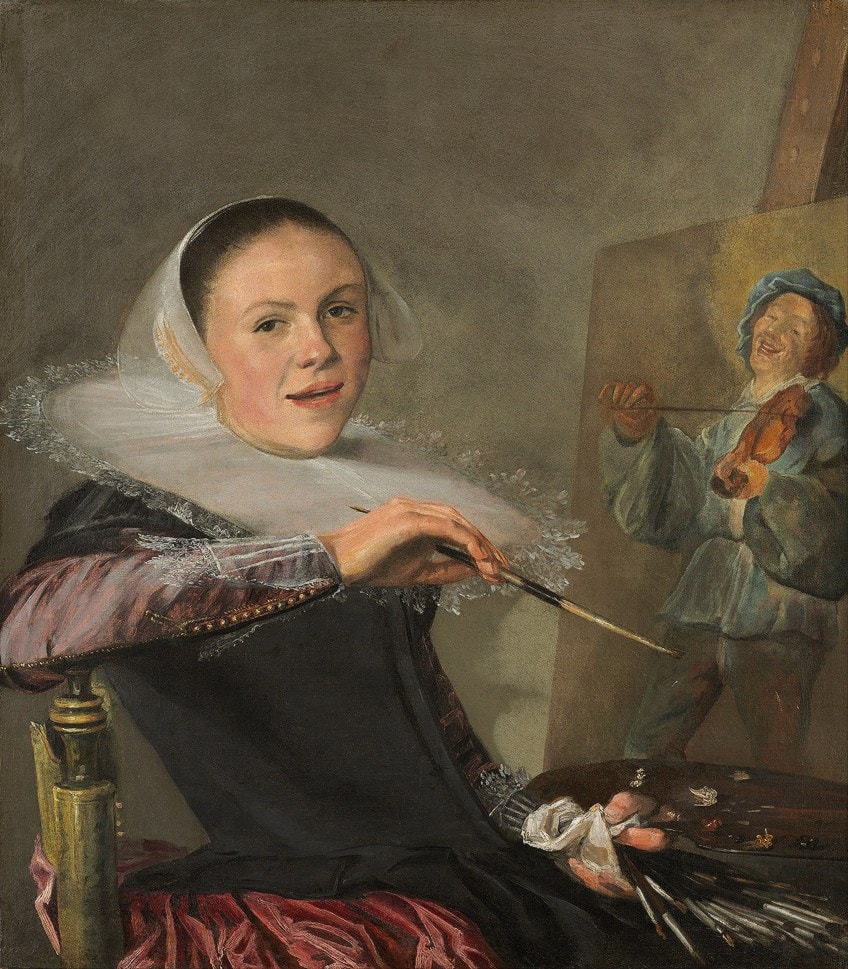
But there is also intimacy between the artist and her own art; the character she is painting within the scene belongs to a later painting of hers, The Merry Trio (1629). By placing a painting within a painting, Leyster showcases her versatility for both genre and portrait. Common practice dictated that female figures occupy the right of the scene, but Leyster places herself to the left, and a male, to the right.
This is a show of power and a demand for respect from her contemporaries – she was a professional painter of the Golden Age as much as any male painter of the time, and she knew it.
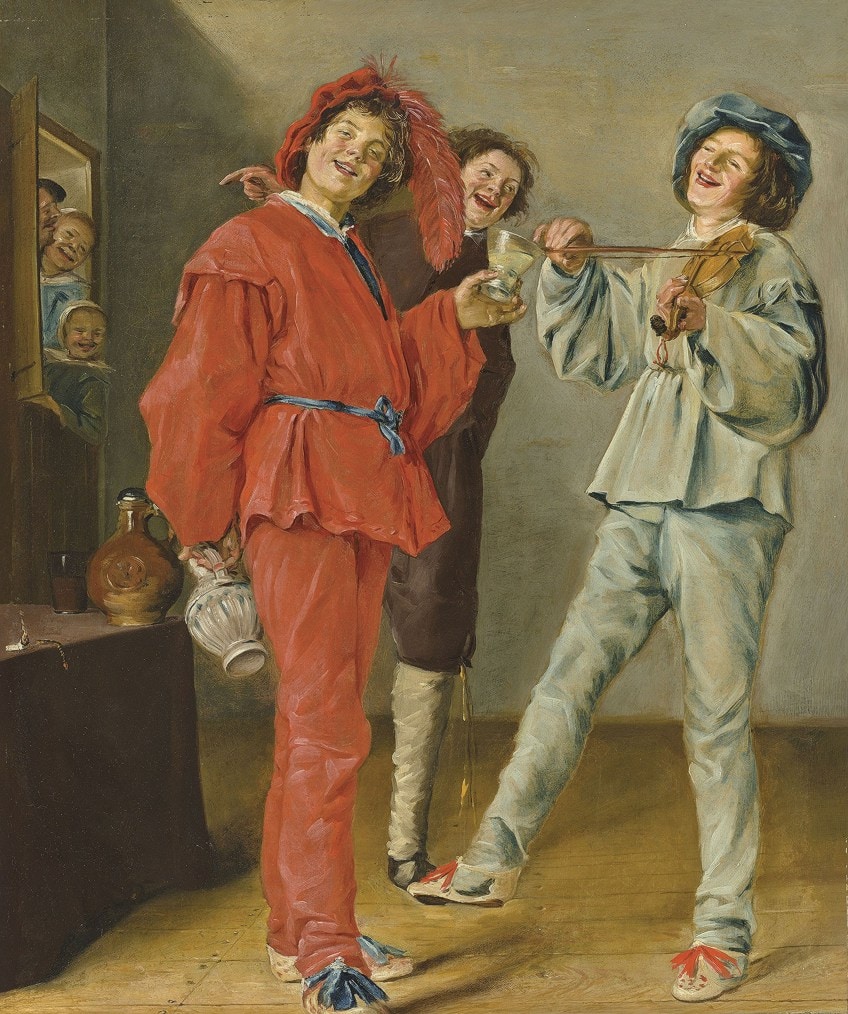
Johannes Vermeer (1632 – 1675)
| Nationality | Dutch |
| Residences | Netherlands |
| Associated Art Movements | Dutch Golden Age Baroque |
| Most Famous Artworks | The Milkmaid (1658) The Procuress (1656) The Girl with a Pearl Earring (1665) |
Born in Delft in 1632, Johannes Vermeer was a 17th-century Dutch Golden Age painter known for his mastery of light, domestic scenes, and female subjects. Vermeer, who many referred to as “The Sphinx of Delft”, was a lover of deep colors and made use of exotic pigments that were rare for the time, ranging from lapis lazuli and ochre to vermillion and bone black.
His paintings have a timeless quality, often small in size but highly detailed.
Vermeer had a lot going on besides painting. He also never received any formal art training, possibly self-taught. At 20, he inherited his father’s inn and art business, and over the years, fathered 15 children. This is why Vermeer’s oeuvre is quite small, consisting of less than 50 paintings. He was also young in the Golden Age, which meant he lived to see the Rampjaar of 1672, during which the Netherlands fell into war, plague, and economic turmoil. Following these events, patronage for art declined, and Vermeer struggled to provide for his family and business. He died in 1675 from – according to his wife’s description – the stress of financial burden.
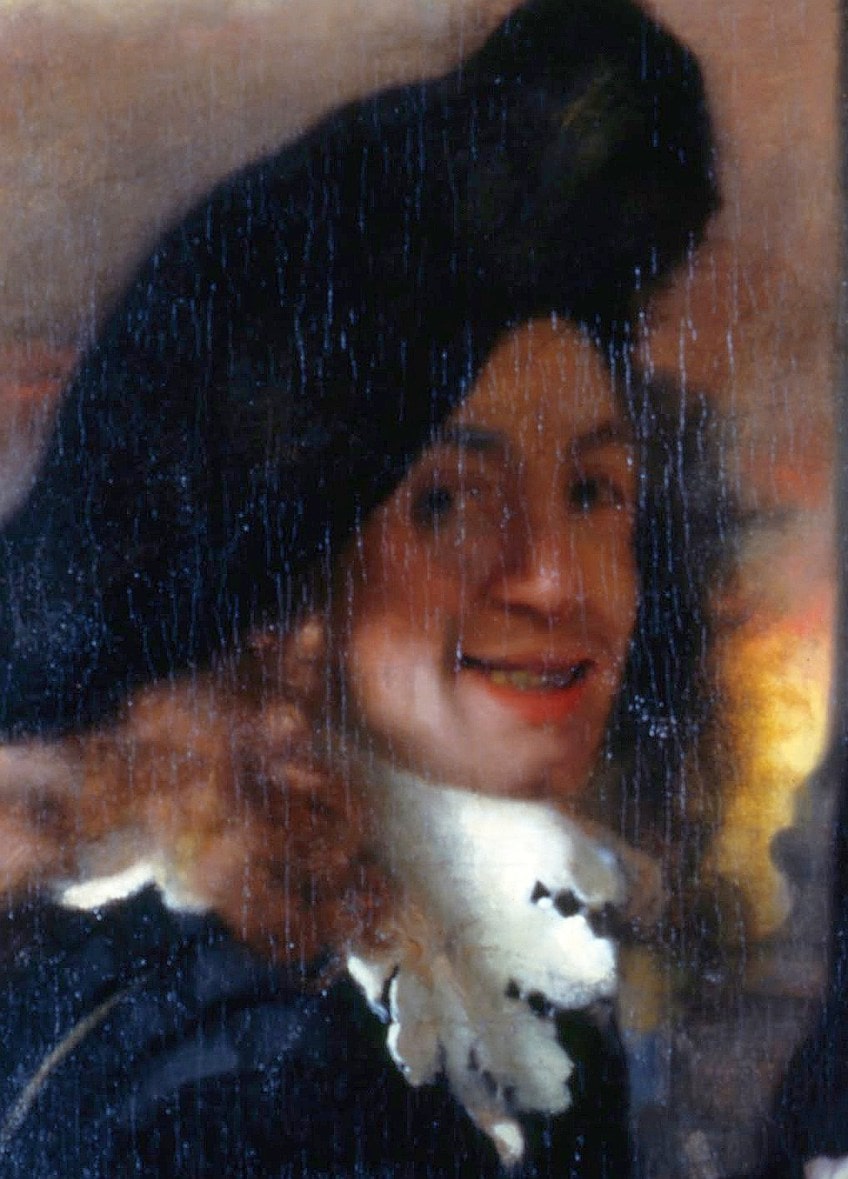
Vermeer mixed several influences in the production of his work. Visual stimuli always meant more than meaning, at least on the first encounter with the painting. The realism of his paintings was intended to shock the viewer into attention, and this he achieved indeed.
This realism is so photographic that some historians suggest that Vermeer made use of a camera obscura.
This claim is backed by the view that Vermeer’s light distribution is too perfect, and that human vision could not process light in such an absolute way. The main painting involved in this controversy is The Music Lesson (c. 1665). Have a look and judge for yourself – brilliance or manipulation? Either way, the artist’s skill remains under no doubt.
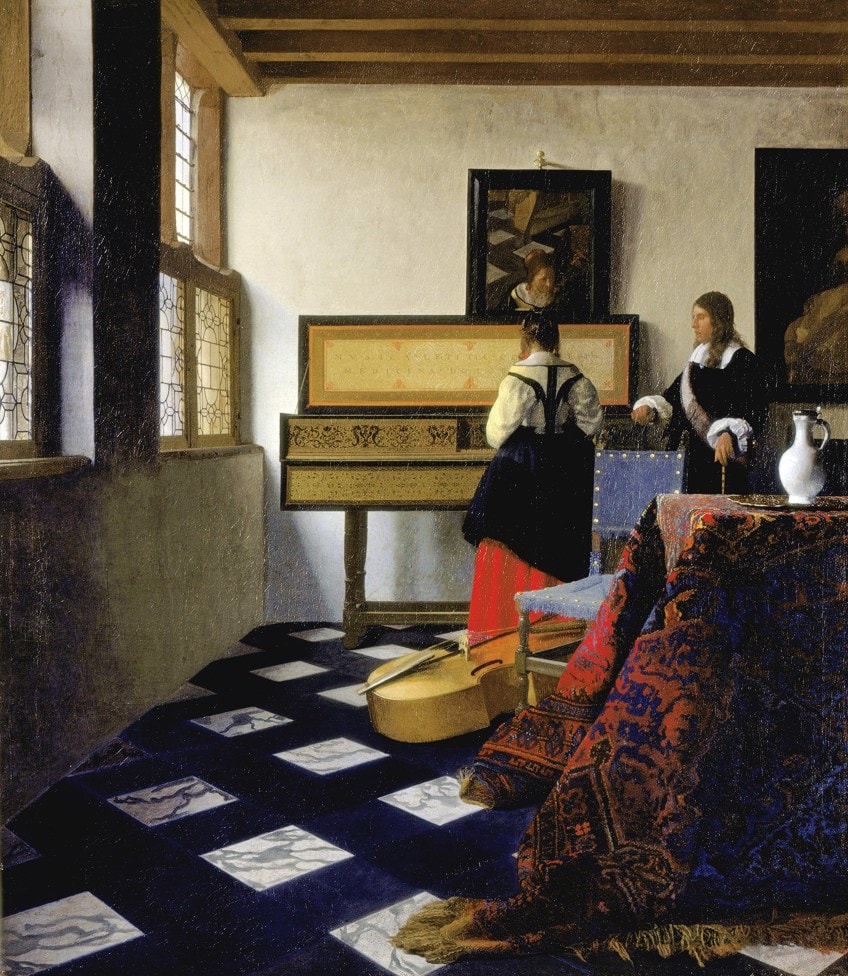
The Milkmaid (1658)
| Year | 1658 |
| Size | 45.5 x 41 centimeters |
| Techniques & Styles | Realism Genre painting Pontile Illusionism Texturing (via impasto and broad strokes) |
| Materials | Oil on canvas |
While Girl with a Pearl Earring is usually taken as Vermeer’s most famous piece, The Milkmaid speaks closer to his core focus and conquest of domestic scenes. It is amongst the most famous Dutch paintings. It is a prime example of Vermeer’s preference for daily life and extensive realism.
Whereas maids were often depicted sexually at this time in Dutch art, Vermeer is an outlier in his dignified and serious approach.

There are still romantic undertones, however, visible in subtle details like the engraving of Cupid on the brick behind the subject’s foot. Such niches are a testament to the meticulous nature of Vermeer’s style. The Milkmaid is often regarded as the artist’s main color showcase.
His treatment of the light that enters the room from the left is of exceptional skill, cool and soft but also vital in the illumination of the subject.
Anton Mauve (1838 – 1888)
| Nationality | Dutch |
| Residences | Netherlands |
| Associated Art Movements | The Hague School Realism |
| Most Famous Artworks | Morning Ride on the Beach (1876) Return of the Flock (1887) Landscape with Cattle (1888) |
Arguably the foremost proponent of the Hague School, Anton Mauve was born in Zaandam in 1838. He was a Dutch landscape painter with realist directions. Peasants and their animals were his favorite subjects. Growing up in Haarlem, he was trained in formal realism.
But Mauve’s true innovation was only revealed after his close colleague, Isaac Israels, suggested he drop his strict style for a more relaxed vision. Out of this developed the Hague School.

Their doctrine was to prioritize feeling over color in order to accurately capture the moods of moments. Nature was to be painted as it was perceived. Sometimes called the Gray School, Mauve and his colleagues made intricate use of grays, greens, and light blues in order to portray the mood intensity of a given moment.
Mauve was committed to realism but with a poetic freedom of hand, somehow managing to keep the balance.
The Return of the Flock, Laren (c. 1887)
| Year | c. 1887 |
| Size | 100.2 x 161.3 centimeters |
| Techniques & Styles | Realism Convergence Mood conveyance Landscape painting |
| Materials | Oil on canvas |
The Return of the Flock is a work by Mauve at the heights of his craft. His relaxed and loose take on realism was a hit internationally. The subjects of sheep and shepherd are his muses at this stage. He sometimes likened the pattering of sheep feet to the sounds of Beethoven.
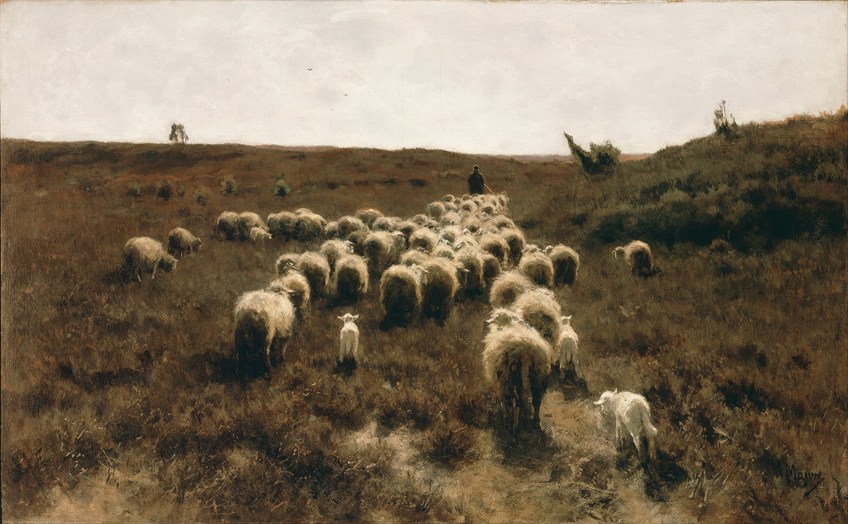
The scene has a cooling effect, perfected by Mauve’s magical use of gray. Paintings like The Return of the Flock, Laren became something of the artist’s specialty, and the US art market used to rank the value of Mauve’s works based on whether sheep were being herded towards or away from the viewer.
In line with his own goals for painting, there is an unmissable mood that is to be experienced when viewing his work – it forces you to feel.
George Hendrik Breitner (1857 – 1923)
| Nationality | Dutch |
| Residences | Netherlands |
| Associated Art Movements | Amsterdam Impressionism |
| Most Famous Artworks | Two Servants on an Amsterdam Bridge at Night (1890) Meisje in de witte kimono (1894) The Singelbrug Near the Paleisstraat in Amsterdam (1897) |
George Hendrik Breitner was born in 1857 in Rotterdam. He is closely associated with the Amsterdam Impressionist movement and is praised as an expert on the cityscape, based on the scenes he captured. Taking lessons in The Hague, August Allebe had a pivotal role in his development as a teacher who encouraged artistic freedom of thought.
He and another young Dutch Impressionist, Vincent van Gogh, would spend days roaming the city, painting working-class subjects.
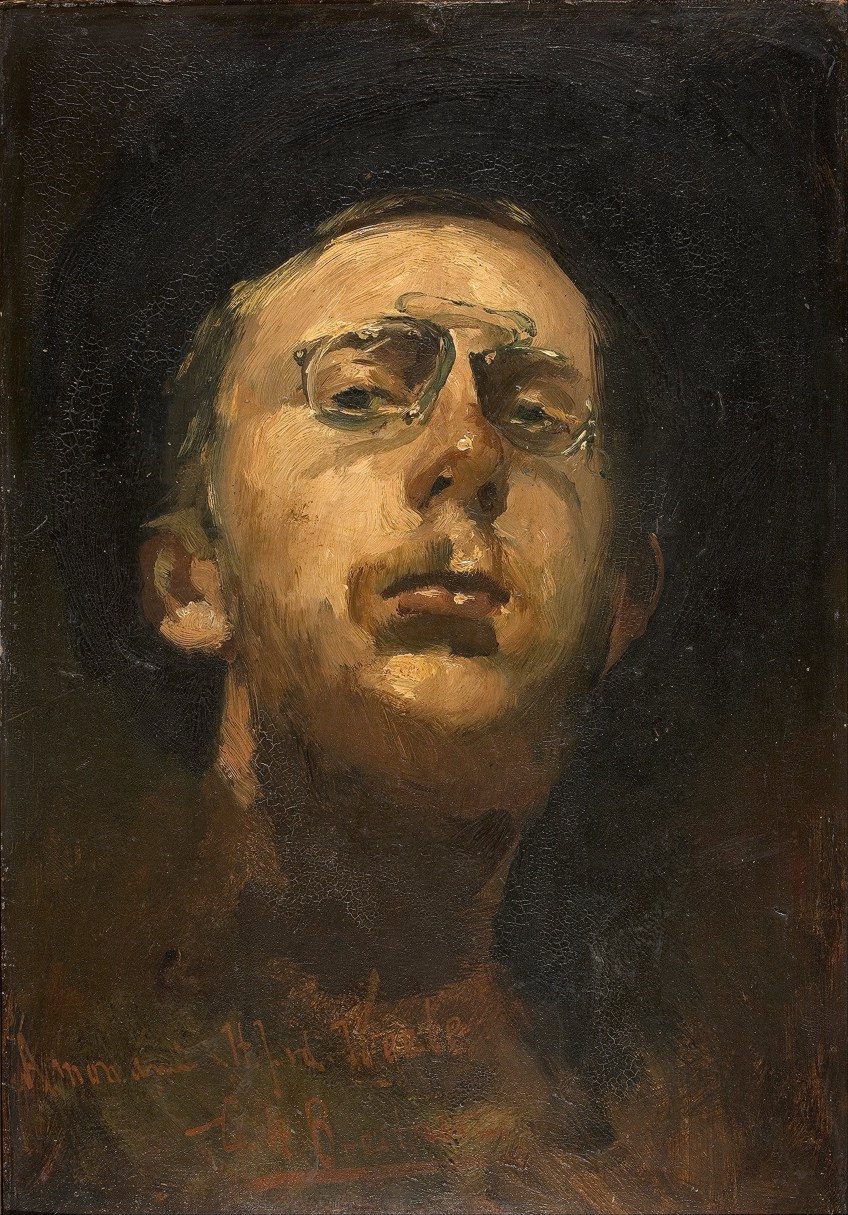
While still dedicated to Realism, what Breitner and other Impressionists found inspiring were the impressions the city left on them. Because these moments were fleeting, he worked quickly and often en plein air, using sketchy and nervous strokes to capture snapshots of everyday life.
In fact, many of his paintings were cut off rather unconventionally, much like a photograph.
In his later years, he would delve deeply into that medium. Amsterdam Impressionism differs significantly from the French, although Breitner was influenced during an earlier stay in Paris. He also composed portraits such as Girl in a White Kimono (1894). Like Rembrandt, his nudes were sometimes criticized for their realism and rejection of the common beauty standard.
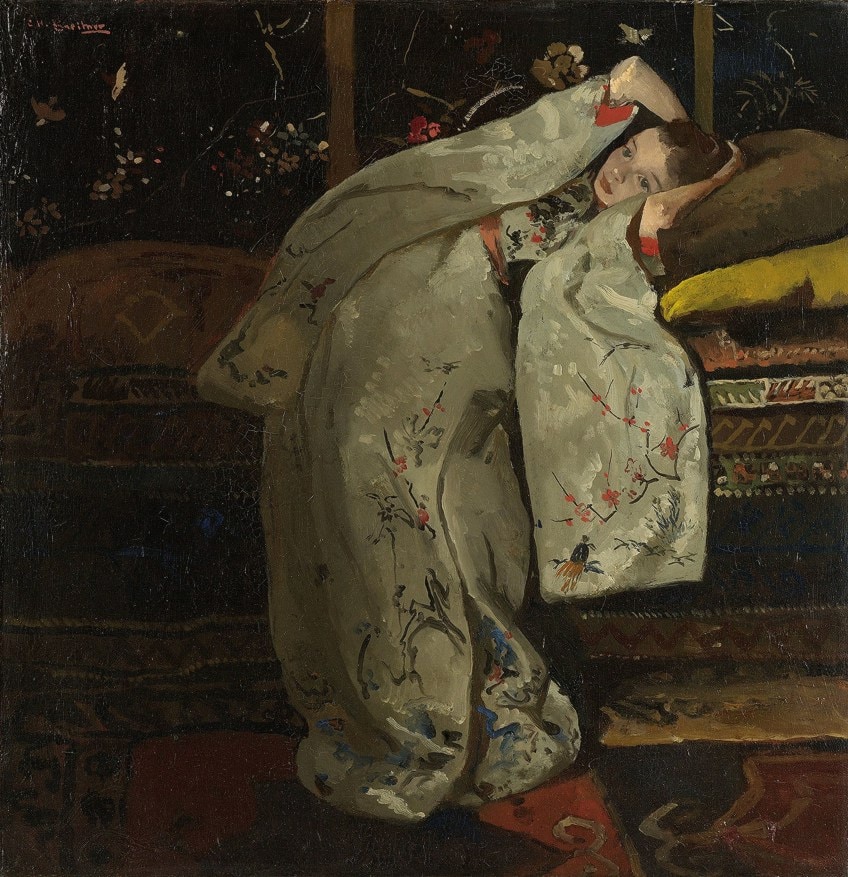
The Singelbrug Near the Paleisstraat in Amsterdam (1897)
| Year | 1897 |
| Size | 100 x 152 centimeters |
| Techniques & Styles | Urban genre painting Impression-driven Realism |
| Materials | Oil on canvas |
Breitner wanted to be a historical painter, but one who paints the history of his own time. The Singelbrug exemplifies his most central skills and styles. The subjects are common people engaged in their daily activities, in this case walking through the snow on the way to their various affairs. But even more important is the way Breitner creates the world of the city around his subjects, to the extent that the urban environment feels alive.
The snapshot feel of his work is also visible, as the image comes off as a moment frozen in time.
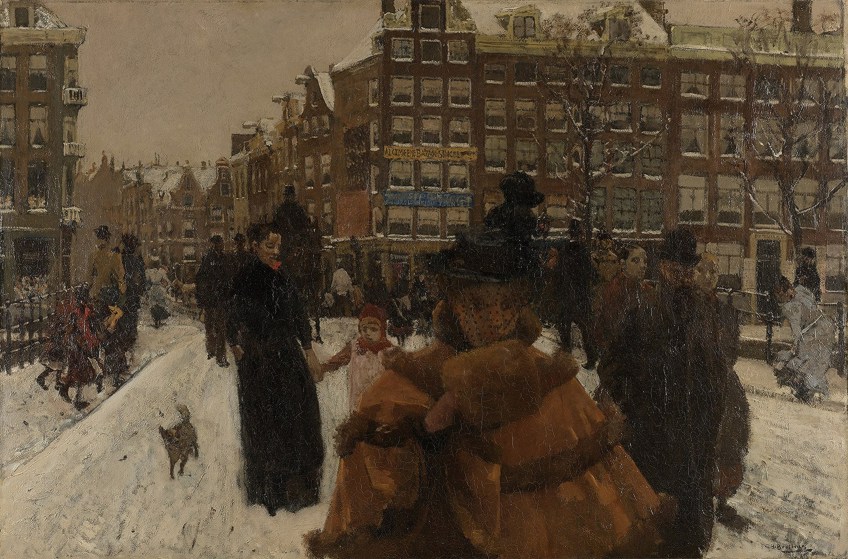
He initially painted a working-class girl at the center of the piece, but because it struggled to sell, he changed the character. There are still examples of working-class subjects, like the girl at the bridge railing to the right.
His style was sometimes called “unfinished”, but Breitner wore this description with pride.
While Breitner may not be as widely known as some of the painters on this list, his impact should not be overlooked. He is deeply loved and respected by Dutch patrons of all generations. Because of his elaborate use of grays in city scenes, Amsterdam locals often refer to gloomy, rainy weather as Breitnerweer (Breitner-weather). He also received numerous awards after his death from photographic societies that used his paintings to better understand their own medium.
Vincent van Gogh (1853 – 1890)
| Nationality | Dutch |
| Residences | Netherlands Belgium France |
| Associated Art Movements | Post-Impressionism |
| Most Famous Artworks | The Potato Eaters (1885) Sunflowers (1889) The Starry Night (1889) |
The most famous Dutch artist of all time needs little introduction. Born in 1853, van Gogh was raised in a deeply religious, high-class home. Traveling around Europe across a wide range of jobs, van Gogh eventually took up art at the suggestion of his dear brother Theo. Untrained and explorative, van Gogh first studied in Brussels and was then guided by his cousin-in-law Anton Mauve, although this relationship did not flower.
Far behind his contemporaries, he spent the next years painting as much as he could, wherever he could.
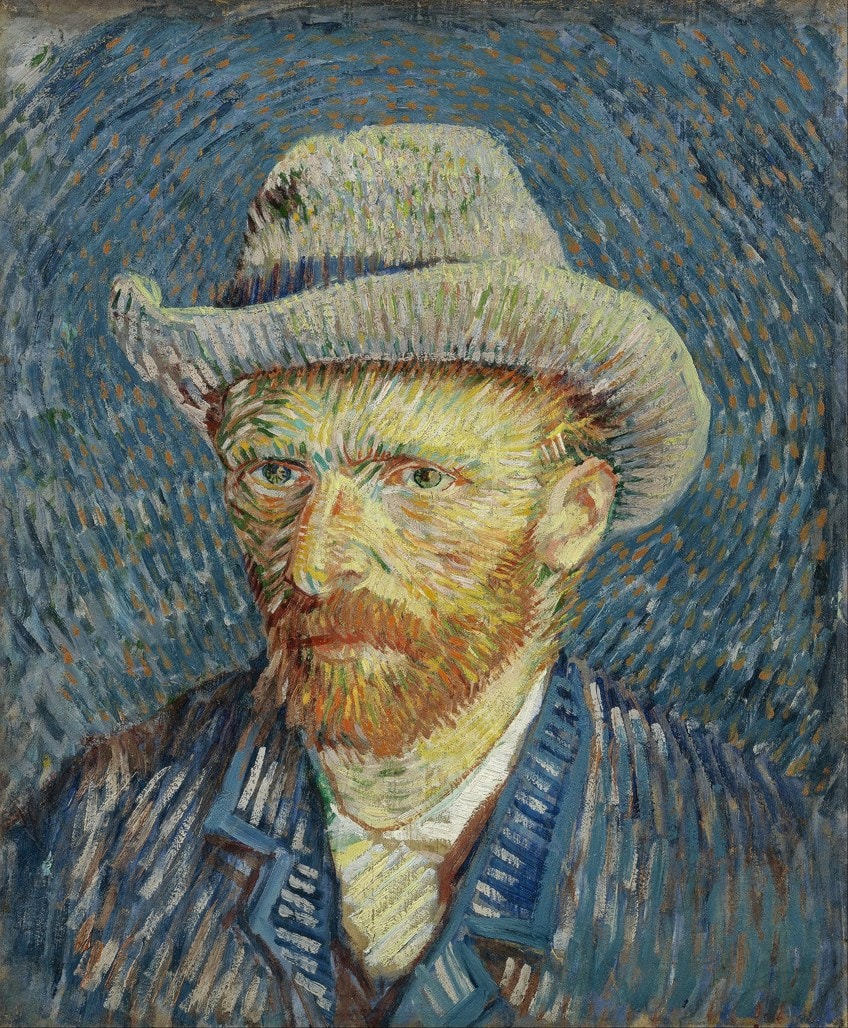
His art took him from Antwerp to Paris to Arles, eating little and smoking a lot along the way. He was truly gripped by art, but this passion would eventually result in a mental breakdown in 1888, during which he famously severed his own left ear. The legendary Dutch Impressionist would continue to paint after this incident. Some of his most touching works originate from his time at the St. Paul Asylum, following this event.
His inspiration was endless, and although he carried his individual style with him, he was influenced by all the places he lived in.
The Starry Night (1889)
| Year | 1889 |
| Size | 73.7 x 92.1 centimeters |
| Techniques & Styles | Impasto Concentrics Abstract landscape painting Full-color use |
| Materials | Oil on canvas |
Van Gogh is most known for his impact on modern art, his dramatic and striking brushwork, and his absolute uniqueness. It is challenging to categorize him into a specific movement, but many call him post-Expressionist. He created upwards of 2000 paintings during his short time as a painter. These ranged from Dutch landscape styles to portraits.
He was always fervent in his belief that a thorough use of color could accurately capture emotions.

The Starry Night captures the view from van Gogh’s bedroom at St. Peters Asylum and was painted half a year after his first breakdown. The piece has been subject to endless debate, although it is known that van Gogh was spiritually fascinated with the night sky at this period of his life. In classic van Gogh fashion, color is used to the fullest, producing a psychological effect. His depiction of the cypress tree may be an early foreshadowing of his death, while the imaginary village in the distance speaks to his isolation. Despite the energetic flows that power the painting, order persists.
His brilliance may have had some unintended consequences, however, as some scholars connect this painting with his second breakdown. His imagination spilled beautifully out onto “The Starry Night”, but at what cost?
Piet Mondrian (1872 – 1944)
| Nationality | Dutch |
| Residences | Netherlands France England USA |
| Associated Art Movements | De Stijl |
| Most Famous Artworks | Tableau I: Lozenge with four lines and gray (1926) Composition with red, yellow, and blue (1942) Broadway Boogie Woogie (1943) |
No discussion of the most famous Dutch artists can be complete without a nod to the ground-breaking Piet Mondrian. Growing up the son of a teacher, he became interested in philosophy at a young age. His initial training as a Dutch landscape painter in Amsterdam was influenced by the Hague School. But soon into his career, his landscapes began to be dominated by a focus on geometric shapes, and during this period, he flirted with Cubism.
In search of the basic truths behind nature and reality he (alongside Theo van Doesburg) developed De Stijl, a group that subscribed to the theory of Neoplasticism.

To Mondrian, nature always functioned perfectly, it functioned with “plastic regularity”, and Mondrian wanted to get to the heart of this by experimenting with line and color. He believed in the unity of nature, society, and art – a visual utopia. His paintings seek to engage with the underlying forces of nature rather than her deceptive and elusive appearances. Composition II (1929) is an example of his stripped-down, anti-individual approach.
He spent the rest of his career developing his theory, never looking towards inspiration but rather the long-term process of getting closer to the fundamental truths of nature.
Broadway Boogie Woogie (1943)
| Year | 1943 |
| Size | 127 x 127 centimeters |
| Techniques & Styles | Equivalence Pontile Non-representational painting |
| Materials | Triptych, Oil on oak |
Broadway Boogie Woogie is considered a foremost piece of modern art. It makes elaborate use of the equivalence technique, a method of balancing all elements in a painting to prevent any one element from dominating over another. Drawing from his earlier work, he is able to achieve an entrancing depth with his use of grays.
The piece represents an explosion of his previous ideas, with an influx of colors, rectangles, and squares.

This is related to the personal renaissance he experienced while living in New York, later in life. Unlike his previous work, it subtly admits that nature can still be found in representation, even if only in traces. In this case, the New York City street grid and the popular jazz sounds of the era are the points of reference for this classic experiment in geometric exploration.
Willem De Kooning (1904 – 1997)
| Nationality | Dutch-American |
| Residences | Netherlands USA |
| Associated Art Movements | Abstract Expressionism |
| Most Famous Artworks | Woman I (1952) Woman III (1953) Interchange (1955) |
Born in Rotterdam in 1904, Willem de Kooning was a Netherlands artist who went on to enjoy a strong international career. His talents were visible from his youth, already under apprenticeship by age 12. His formal education in Holland was well-rounded, as students in Dutch art schools would learn both fine and applied arts.
This versatility would serve him well in his later career.
Following his dreams of becoming a commercial artist, De Kooning snuck aboard a ship bound for the United States. By the time he had acquired some documentation and made his way to New York, he was welcomed by a stimulating city, full of different nationalities and inspirations.

In his career, De Kooning was always tempted to find new ground, he never wanted to repeat himself. Many have connected this to his experience as an immigrant. His habit would eventually find a home in Abstract Expressionism. This movement sought to break away from all common art forms of the time, including cubism and surrealism.
It was a rebellious idea and adopted the method of subconscious composition, a practice in which artists allow their psyche to roam free upon the canvas.
This art was political precisely because it was apolitical – these artists wanted to liberate themselves from the value that was always implied in art, be it monetary, religious, or political. Art is not the final object, but the struggle and actions involved in creating that object. After an extremely successful career, De Kooning would battle with Alzheimer’s in later life, passing away in 1997.
Woman I (1952)
| Year | 1952 |
| Size | 192.72 x 150 centimeters |
| Techniques & Styles | Subconscious exploration Spontaneity Action painting |
| Materials | Oil and metallic paint on canvas |
De Kooning was attracted to the spontaneous, subconscious capabilities of the painter. Brushstrokes should be varied and inconsistent, paint can be splashed or scattered. Painting just to paint is precisely what De Kooning found so special. His Woman I is a prime example of this.
Woman I was originally a worn-out canvas sitting in the corner of De Kooning’s studio. A friend of his once asked about it, and the artist described it as an image with various spontaneous additions and repaints over time.
For over two years, De Kooning had painted over this figure of a woman hundreds of times, trying new angles while covering previous splashes of subconscious creativity.
painting
This made the piece impossible to replicate and endowed it with a certain physicality – the multiple layers of brushstrokes allow for Woman I to pop out from the painting’s surface and into the three-dimensional world. Consistent with his critique of the value embedded in art, some have related Woman I to the hypersexualized female ideal of the 50s and 60s America.
Clearly, Dutch painting is a diverse field that has taken many different forms over the centuries. Beginning with the Flemish Primitives, van Eyck and Bosch were some of the first to give an indication of the artistic talents that were available in the Netherlands. The Dutch Golden Age masters, Rembrandt, Leyster, and Vermeer are an unmissable addition to any list of famous Dutch artists. The gray history that followed this period was reflected in the grays of Mauve and Breitner, as Hague School and Amsterdam Impressionist artists respectively. Mondrian and De Kooning offer an insight into abstract, modern Dutch painting, who sought to reject the common styles of their time and overcome basic understandings of art. There are hundreds of amazing Dutch painters who could not make this list but also deserve recognition – the only thing left for you to do is explore.
Frequently Asked Questions
Who Are Dutch painters?
When speaking about Dutch artists and painters, we refer to individuals who come from the Netherlands, a country in North-West Europe surrounded by Germany and Belgium. With France also nearby, it is not a surprise that many of the painters on this list spent some years working in these neighboring European countries. The Netherlands is host to beautiful natural scenes, inspiring many local artists to compose striking landscape paintings over the years.
What Makes Dutch Paintings Unique?
Dutch painters of the past were heavily influenced by the wider trends that were popular in Europe during the time they lived. This influence, which ranged from the Italian Renaissance to French Expressionism and beyond, is visible in many of the paintings in this list. And yet, there is a certain specialty to Dutch art, a flavor that does not seem to have been captured anywhere else. Using these influences as a background, Dutch painters were able to add a unique spin to their work, inviting patrons to enjoy these familiar styles from a different yet beautiful new perspective. In short, Dutch painting can be valued for the way it provided a new way of engaging mainstream European art.
Who Are Some Famous Dutch Painters Today?
This list went through history to find the most famous Dutch painters, but this does not mean art from the Netherlands is not going strong in the present day. Dutch artists of today are engaged in various genres and mediums, many continuing with the abstract tradition first introduced by De Kooning. It is clear however that these contemporary artists have learned endlessly from their artistic ancestors. The high quality and unique nature of Dutch art remain intact today. Some progressive and notable painters of the contemporary Dutch scene are Isabella Werkhoven, Marlene Dumas, Marc Mulders, Evi Vingerling, and Frederique Jonker, among many others.
Armin Kific is a social and political researcher and writer based in Pretoria, South Africa. He completed a degree in Political Science with majors in History and Philosophy in 2020 and has since completed an Honours in Anthropology and History. He is also currently pursuing a Master’s degree in Social Sciences from the University of Pretoria. Armin’s knowledge of the arts spans various mediums, and he is always looking for ways to marry art with social science. In 2021, he produced a short documentary film about the often-forgotten South African soul star Mpharanyana, integrating history, music, photography, and film. Armin is well-versed in art history, especially in the fields of political artwork and ancient artifacts. He enjoys exploring art history sources for information that has been lost or overlooked. He is also trained in biographical writing.
His favorite art movements include baroque, surrealism, and neoplasticism. Armin is an ardent supporter of indigenous art in South Africa and is involved in an organization that looks to uplift South African artists following the challenges of Covid-19. By writing for ArtInContext, Armin continues to cultivate his artistic creativities and unite perspectives between art and society.
Armin has been working for artincontext.org as an author and content writer since 2022. He writes about the topics of art history, specializing in political artworks and ancient artifacts.
Learn more about Armin Kific and the Art in Context Team.
Cite this Article
Armin, Kific, “Famous Dutch Painters and Paintings – Art of the Dutch Golden Age.” Art in Context. May 4, 2022. URL: https://artincontext.org/famous-dutch-painters-and-paintings/
Kific, A. (2022, 4 May). Famous Dutch Painters and Paintings – Art of the Dutch Golden Age. Art in Context. https://artincontext.org/famous-dutch-painters-and-paintings/
Kific, Armin. “Famous Dutch Painters and Paintings – Art of the Dutch Golden Age.” Art in Context, May 4, 2022. https://artincontext.org/famous-dutch-painters-and-paintings/.


